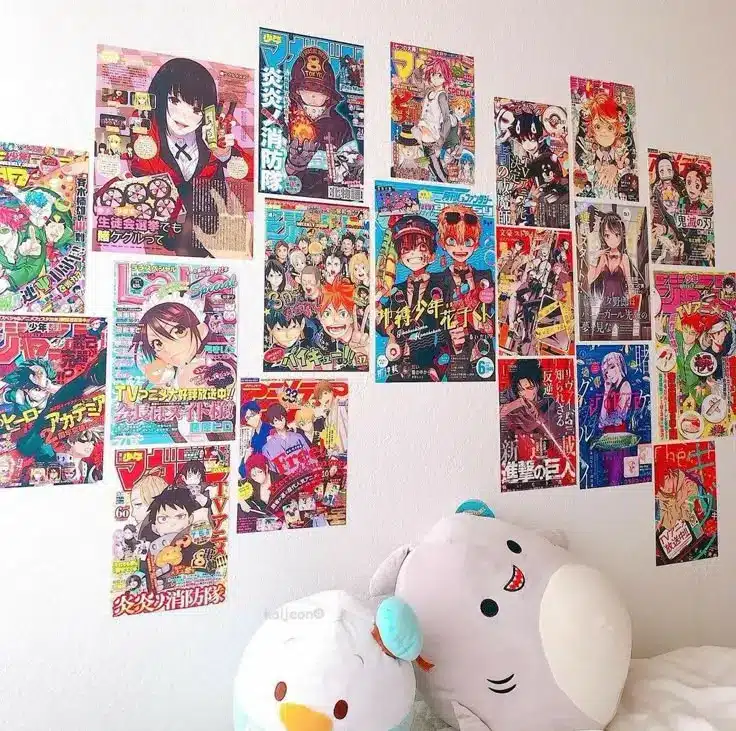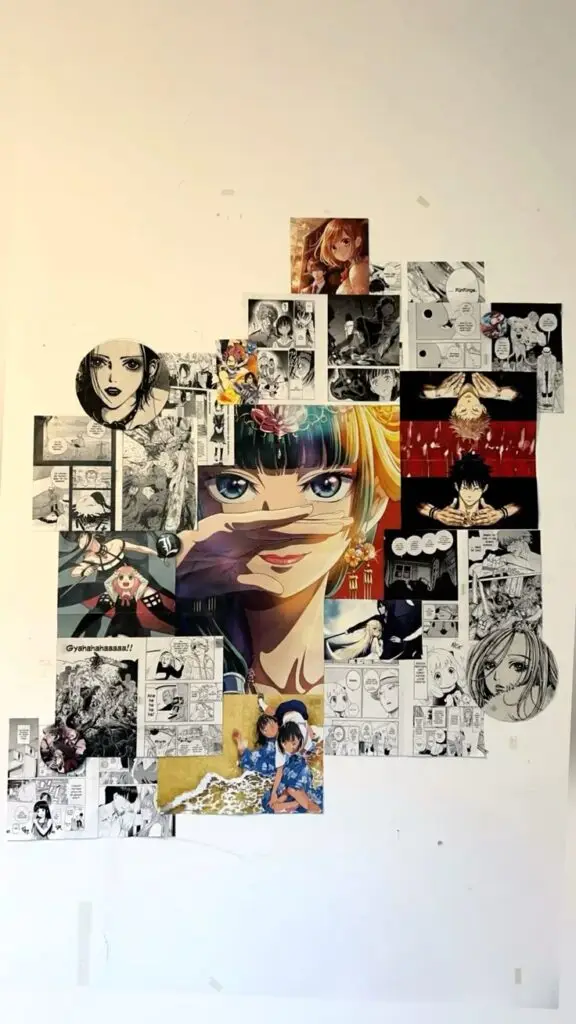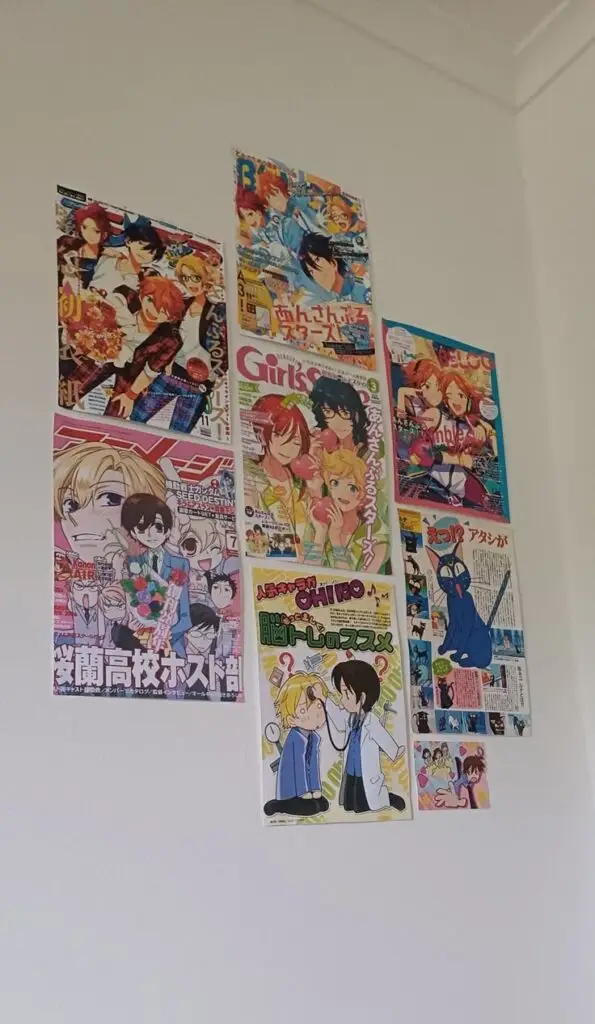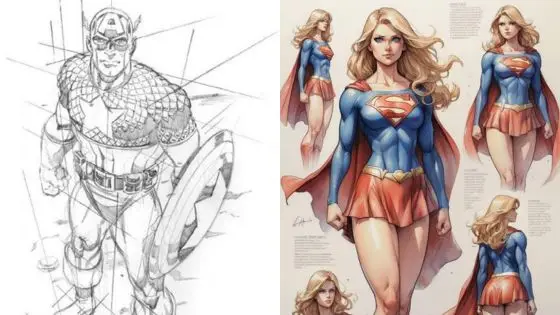Bringing your favorite anime characters to life on canvas can transform your space and showcase your artistic skills. Creating your own anime wall art allows you to express your passion for the genre while adding a personal touch to your decor. Whether you’re an experienced artist or trying your hand at painting for the first time, this project can be both rewarding and enjoyable.
You can start by selecting a character that resonates with you. Next, gather the right materials to ensure your artwork stands out. The process involves sketching, painting, and finally displaying your piece, making it an engaging experience that results in something uniquely yours.



Key Takeaways
- Select an anime character that inspires you for your canvas.
- Use quality materials to enhance the final artwork.
- Display your creation in a way that showcases your personality.
Choosing Your Anime Character
Selecting an anime character for your wall art is essential to your project. Focus on aspects such as character design and the unique traits that define them. This choice will guide your painting style and the overall composition.
Understanding Character Design
Anime characters often combine distinctive elements that contribute to their visual appeal. When choosing a character, consider key attributes like color palette, clothing style, and facial expressions.
- Color Palette: Bright, bold colors can enhance mood and draw attention. Subtle, muted tones can create depth and intrigue.
- Clothing Style: Costumes can convey personality traits. Think about how armor, casual outfits, or fantasy attire will impact your canvas.
Pay attention to proportions. Chibi styles focus on exaggerated features, while realistic designs have more accurate anatomy. Each style leads to different artistic challenges.
Incorporating Iconic Features
Integrating iconic features of your chosen character can make your artwork stand out. Unique hairstyles, accessories, and expressions play a significant role in recognition.
- Hairstyles: Vibrant colors or exaggerated shapes can instantly identify a character. Consider how you will translate this into your painting.
- Accessories: Items like weapons, glasses, or hats can enhance the character’s identity. Think about how they will interact with other design elements.
- Expressions: Capturing a character’s typical expression invites viewers to connect emotionally. Consider how you can convey feelings through facial details.
Focus on these elements to ensure your character resonates with viewers.



Materials and Tools
To create your own anime wall art, gathering the right materials and tools is essential. This section focuses on selecting the appropriate canvas, the best paints for vibrant colors, and essential accessories for painting.
Selecting the Right Canvas
Choosing the right canvas is crucial for achieving the desired look for your artwork. Options include cotton and linen canvases, with cotton being budget-friendly and suitable for beginners.
For a more professional finish, consider a gallery-wrapped canvas, which provides a thicker border. Canvas panels are another alternative; they are portable and great for practice.
Make sure to use a size that complements your design. Standard sizes range from 8×10 inches for small pieces to 24×36 inches for larger displays.
Best Paints for Vibrant Artwork
When it comes to paints, acrylics are the most popular choice for anime wall art. They dry quickly and are highly versatile.
Brands like Winsor & Newton and Liquitex offer excellent pigment concentrations for vibrant colors. You can also explore watercolor paints for softer effects, but they require more skill to layer effectively.
Don’t forget about paint mediums. Mixing in a gloss medium can enhance color vibrancy and increase durability. Make sure to have a range of primary colors, including reds, blues, and yellows, to create a wide palette.
Essential Accessories for Painting
Gathering essential accessories will improve your painting experience. Start with brushes, which come in various shapes and sizes. Flat brushes are great for broad strokes, while fine detail brushes are crucial for intricate designs.
Palettes, either traditional or disposable, help mix your paints. Invest in a sturdy easel for comfortable working.
Lastly, use masking tape to create clean edges and protect areas of your canvas. It’s also helpful to have water containers for rinsing brushes and paper towels for quick clean-up.



Creating the Artwork
Begin by establishing a solid foundation for your anime wall art. This involves drafting and sketching your character, followed by layering colors effectively, and finishing with details and highlights.
Drafting and Sketching Techniques
Start with a light pencil outline of your character. Focus on getting the proportions right before adding details. Use basic shapes to organize the composition. As you refine your sketch, pay attention to facial expressions and body language, which are crucial in anime art.
Consider the character’s posture and how it interacts with the background. Use reference images for accuracy and inspiration. Once satisfied, strengthen your lines with a darker pencil or ink to prepare for painting. Remember to leave room for modifications during the painting process.
Layering Colors Effectively
Choose a color palette that reflects your character’s personality. Start with a base layer of flat colors, ensuring even coverage. Use a larger brush for broad areas like skin and clothing.
After the base layer dries, build up colors gradually. Add mid-tones to create depth. Use a smaller brush for intricate areas, mixing paints to achieve desired shades. The key is to layer colors smoothly, allowing you to blend and create gradients.
Experiment with opacity by adding water or medium to your paints, giving you more control over the final look. This technique helps in achieving skin tones and shading in clothing, contributing to a more dynamic appearance.
Adding Details and Highlights
Detailing is where your character comes to life. Use fine brushes to add facial features, patterns on clothing, and textures in hair. Pay close attention to the eyes, as they often express the character’s emotions.
After defining details, apply highlights with a lighter shade or white paint. This can enhance areas such as hair and clothing folds, creating a three-dimensional effect. Use thin lines for highlights, ensuring they complement the overall color scheme.
Consider adding background elements that resonate with your character, enhancing the overall composition. Stay consistent with the light source for a cohesive and polished appearance.



Preservation and Display
Preserving your anime wall art is essential to maintain its vibrancy and integrity over time. Appropriate sealing and framing will enhance the artwork’s lifespan and visual appeal.
Sealing and Protecting Your Canvas
To protect your painted canvas, begin by applying a sealer. Use a clear acrylic spray or a paint-on medium designed for canvas art. Wait until the painting is completely dry, then apply the sealer in thin layers.
Tips for sealing:
- Distance: Hold the spray can 12-18 inches away from the canvas.
- Ventilation: Work in a well-ventilated area to avoid inhaling fumes.
- Drying time: Allow each layer to dry thoroughly before applying the next for optimal coverage.
Sealing not only protects against dust and moisture but also enhances the colors. A final coat of gloss or matte finish can give your artwork the desired look.
Framing Considerations
Choosing the right frame is crucial for displaying your anime canvas. A frame should complement your artwork while providing protection.
Considerations for framing:
- Material: Wood frames add warmth, while metal frames provide a modern touch.
- Glass type: Use UV-filtering glass to guard against sunlight damage.
- Matting: Consider whether to add a mat for depth; it can create a visual border that enhances details.
Ensure the frame supports the canvas properly to avoid warping. By opting for the right frame and glass, you can significantly increase your artwork’s longevity while showcasing your creative work effectively.
- 112shares
- Facebook0
- Pinterest111
- Twitter1


